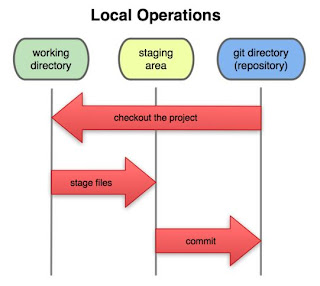Say you want to develop an application which will have many viewers/pages and all these have to be refreshed with the latest data as soon as the data changes in the engine.
A very simple example is - Weather Reports. When the data changes in the engine, the weather report page has to be refreshed to show the latest data.
Let's follow the below steps:
- Develop your report dialog - which will show the weather information.
- Implement the ChangeListener in the dialog report- This will act as a listener
- Implement your report data class, which contains the weather information. This will act a notifier and also as a registry.
- Register your listener with the data class so that the viewer will get a notification if the data changes.
Here is the sample code for it:
import java.util.List;
import javax.swing.event.ChangeEvent;
import javax.swing.event.ChangeListener;
import org.eclipse.jface.viewers.TableViewer;
import org.eclipse.swt.SWT;
import org.eclipse.swt.layout.GridData;
import org.eclipse.swt.layout.GridLayout;
import org.eclipse.swt.widgets.Composite;
import org.eclipse.swt.widgets.Display;
import org.eclipse.swt.widgets.Group;
import org.eclipse.swt.widgets.Shell;
import org.eclipse.swt.widgets.Table;
import org.eclipse.swt.widgets.TableColumn;
/**
*
* Weather report dialog.
*
*/
public class WeatherDetailsDialog implements ChangeListener {
private TableViewer weatherViewer;
protected WeatherDetailsDialog() {
//your specific data passed through constructor
}
protected void createReport(Composite topComposite) {
Group dependantsViewerGroup = new Group(topComposite, SWT.NONE);
dependantsViewerGroup.setLayout(new GridLayout());
GridData gridData3 = new GridData(SWT.FILL, SWT.FILL, true, false);
dependantsViewerGroup.setLayoutData(gridData3);
dependantsViewerGroup.setText("Weather Report"); //$NON-NLS-1$
weatherViewer = new TableViewer(
dependantsViewerGroup, SWT.FULL_SELECTION | SWT.H_SCROLL | SWT.BORDER);
final Table reportTable = weatherViewer.getTable();
reportTable.setLinesVisible(false);
reportTable.setHeaderVisible(true);
reportTable.setLayoutData(gridData3);
GridData gridData = new GridData(SWT.FILL, SWT.TOP, true, false);
gridData.heightHint = 140;
reportTable.setLayoutData(gridData);
TableColumn cityName = new TableColumn(reportTable, SWT.LEFT);
cityName.setText("City"); //$NON-NLS-1$
cityName.pack();
cityName.setWidth(100);
TableColumn valueColumn = new TableColumn(reportTable, SWT.LEFT);
valueColumn.setText("Value"); //$NON-NLS-1$
valueColumn.pack();
valueColumn.setWidth(100);
TableColumn descriptionColumn = new TableColumn(reportTable, SWT.LEFT);
descriptionColumn.setText("Description"); //$NON-NLS-1$
descriptionColumn.pack();
descriptionColumn.setWidth(120);
weatherViewer.setContentProvider(new WeatherContentProvider());
weatherViewer.setLabelProvider(new WeatherLabelProvider());
//Register viewer with the weathe report data.
List<IWeather> reportData = computingEngine.getReportData();
for (IWeather data : reportData) {
((Weather)data).addChangeListener(this);
}
weatherViewer.setInput(reportData);
}
/**
* Invoked when the target of the listener has changed its state.
*
* @param e a ChangeEvent object
*/
@Override
public void stateChanged(ChangeEvent arg0) {
Display.getDefault().asyncExec(new Runnable() {
@Override
public void run() {
weatherViewer.refresh();
}
});
}
}
This will notfiy as soon the data changes.
import java.util.ArrayList;
import java.util.List;
import javax.swing.event.ChangeListener;
public class Weather {
private List<ChangeListener> registeredListners = new ArrayList<ChangeListener>();
private ComputingEngine ComputingData;
private Float newValue;
private String description;
public Weather(ComputingEngine ComputingData) {
this.ComputingData = ComputingData;
}
/**
* Updating the status change. This will notify to all the registered listeners
* Ex: It will notify to the viewer/UI about the weather change report
* */
public void setValue(Float newValue) {
this.newValue = newValue;
notifyListeners();
}
public ComputingEngine getComputingData() {
return ComputingData;
}
public void setDescription(String description) {
this.description = description;
}
public String getDescription() {
return description;
}
public Float getNewValue() {
return newValue;
}
//Add your listener here
public void addChangeListener(ChangeListener listener) {
if (!registeredListners.contains(listener))
registeredListners.add(listener);
}
//removing the listener
public void removeChangeListener(ChangeListener listener) {
if (registeredListners.contains(listener))
registeredListners.remove(listener);
}
//This will be triggered when the state changes
public void notifyListeners() {
for (ChangeListener listener : registeredListners) {
listener.stateChanged(null);
}
}
}
















